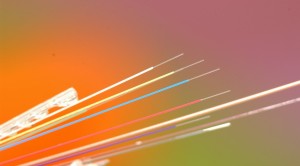Verizon FiOS in Buffalo NY
 Fiber optic networking is the very backbone of the Internet, primarily because it is fast and versatile. The Internet backbone stretches from Buffalo to Los Angeles, but population dense areas like the Buffalo, Erie, Rochester, and Niagra Falls area are very special for one reason: average citizens in this area can receive direct fiber optic connections to their door! That’s right, fiber from their home all the way out to the heart and soul of the Internet and back again thanks to the power of Verizon’s FiOS network.
Fiber optic networking is the very backbone of the Internet, primarily because it is fast and versatile. The Internet backbone stretches from Buffalo to Los Angeles, but population dense areas like the Buffalo, Erie, Rochester, and Niagra Falls area are very special for one reason: average citizens in this area can receive direct fiber optic connections to their door! That’s right, fiber from their home all the way out to the heart and soul of the Internet and back again thanks to the power of Verizon’s FiOS network.
Why is fiber so important? Let’s start with the raw speed and reliability. Residents of NIagra Falls are treated to an amazing spectacle that serves as a great analogy: the water over those falls slowly eroding bedrock year after year. Just as electricity slowly erodes and degrades water, the water that pours over the falls changes the shape and location ever so slightly every single day just as electrons slowly damage wires. The difference is, we do not send millions of signals a second over the falls, nor do we really care where one drop of water starts or ends so long as the spectacle amazes visually. Data is not nearly so random or tolerant of seeming randomness, and the net result is that you do not want to trust a massive flow of data to electrical wires. This is the first of many reasons why FiOS uses fiber optics, just like the backbone of the Internet.
Another problem is that of speed. Light speed and electrical speed are very comparable, but the problem is one of bandwidth. Light can be measured in so many ways and spectrums that can be stacked and separated while electricity simply goes higher or lower and may have a different oscillation. The net effect is that multiple light signals can be sent at the same time, all while not altering or damaging the fundamental composition of the fiber optic conduit. The same is not true of electrical wire that has a certain limitation to how much information it can carry much like the falls have a certain amount of water that they are capable of withstanding in a given period of time. Too much data, just like a constant flood, would completely alter the digital landscape and ruin the wires just as too much water would erode the falls and drown the nearby area.
Why is this important? Because sending a signal from Rochester to a server in Tonawanda is fairly simple and easy, as is sending it back. But when that same wire from Tonawanda is also serving up data to Erie, Rochester, and Niagra Falls, then there is a potential limitation in the metal wiring. Fiber optics may also have limitations, but they are orders of magnitude higher and based more on the signaling devices than anything else.
While all this fiber optic technology sounds great, how does it impact the everyday person in Rochester? Simple: class leading broadband that is several times faster than anything the competition has, amazing digital telephone service, and a HD digital cable experience unlike any other. It is also the fusion of these services that enables caller ID management to be integrated with your TV/DVR as well as the ability to use broadband to view phone logs or even schedule DVRs!
